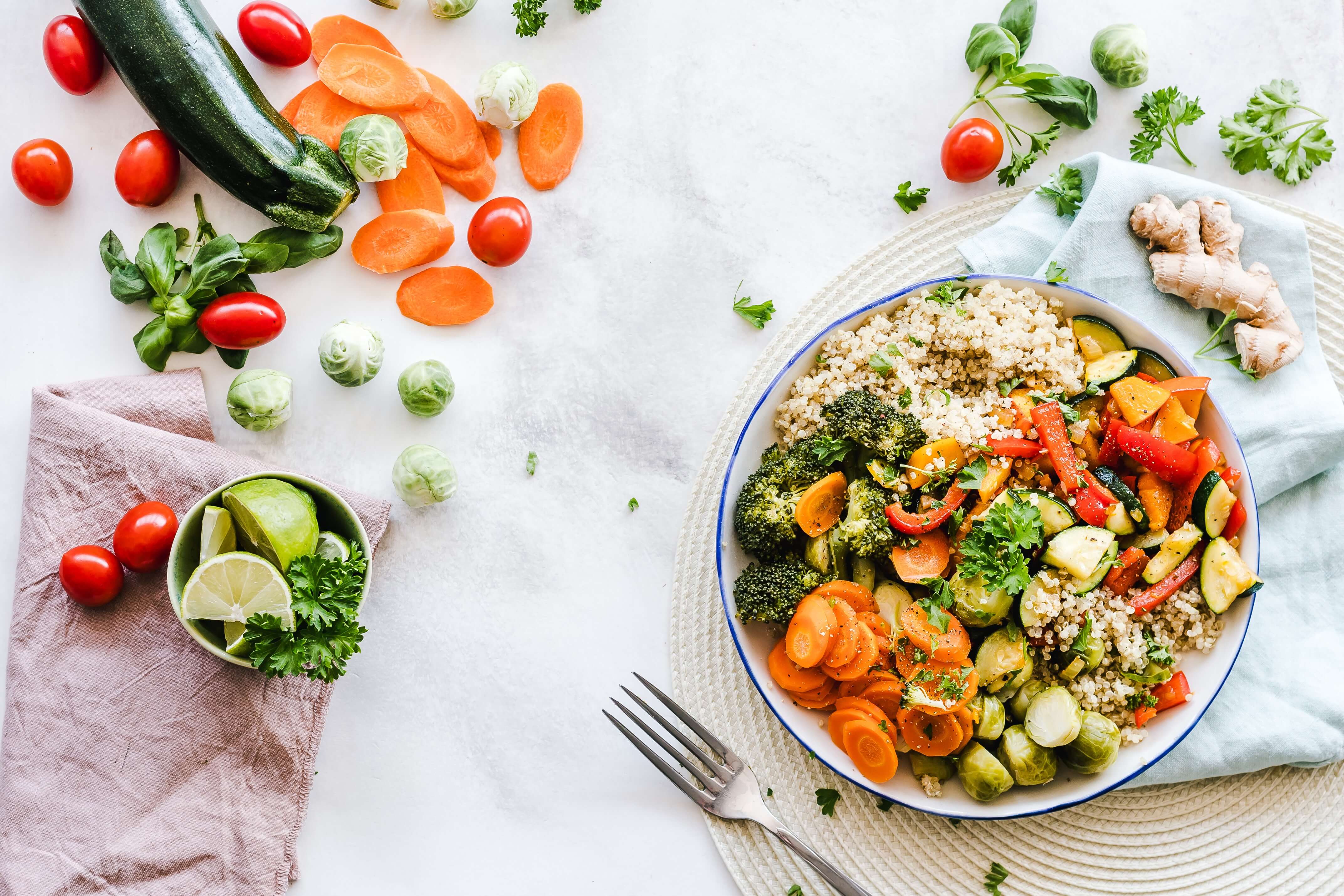.png?width=494&name=nutrition-awareness-wristband%20(1).png)
"You are what you eat? That's funny... I don’t remember eating a sexy beast this morning,” is what we all say in the bathroom mirror.
Right? No? Okay.
But, in all seriousness, whether you are the healthiest person on the planet, or you eat a carrot only once every blue moon, there are always ways to better your eating habits.
Here are the top ten ways to improve your nutrition without drastically changing your lifestyle.
Top Ten Nutrition Tips
1.) Drink Water
Water is the most important thing we could ever factor into our diets. Water makes up 60% of our bodies. It regulates our internal body temperature, transports carbohydrates and proteins, assists in flushing waste, acts as a shock absorber for the brain, spinal cord, and fetus; forms saliva, and lubricates joints.(1)
It can also greatly affect our eating habits.
The more water we ingest, the more our stomachs are filled. Meaning, we feel less hungry since water occupies most of the surface area in our stomach. Nutritionally speaking, if we drink more water instead of high-sugar drinks, the less caloric intake we have.
2.) Whole Grains
Although it depends on your demographic, at least half of all grains we consume should be whole grains.(2)
Whole grains include:
- Whole-wheat flour
- Bulgur (cracked wheat)
- Oatmeal
- Whole cornmeal
- Brown rice.
The grains to avoid are refined grains. These grains are milled to give grains a longer shelf-life, but they become enriched, meaning certain B vitamins and iron are added back after processing. Refined grains include, white flour, degermed cornmeal, and white rice.
Think: if it’s white, it isn’t right.
3.) Portion Control
One of the main factors that sneak up on our eating habits are our portions. It’s no lie that most of us love food, and the more we love it, the more we eat it. That’s why it’s important to portion and limit our servings.
The common way to do this is to read the nutrition label. On the back of each food product are the nutrition facts, where they list serving sizes per container as well as calorie count. Check your dietary guidelines on the food label to see what you can consume within the day.
Other ways to maintain your portions is to track your options with a food tracker app, measure out with measuring cups and/or buy containers that section it out for you.
Because America has become used to large portions, especially at restaurants, it’s important to remember to limit your servings and maintain a well-balanced diet.
4.) Vitamins
Are they fact or fiction?
Fact!
According to NIH.gov, vitamins are needed for normal cell function, growth, and development. However, be aware of your intake. High doses of vitamins can be toxic. Make sure to ask your health care specialist what is right for you.
5.) Trans Fats and Processed Foods
It’s simple: avoid all trans fats. Trans fats raise your bad cholesterol and lower your good cholesterol, as well as increases your risk of developing heart disease and stroke.(5) It’s also associated with a higher risk of developing type 2 diabetes.
While trans fats are a huge no, processed foods can be allowed.
Processed food can help you eat more nutrient-dense foods. Milk and juices sometimes are fortified with calcium and vitamin D, and breakfast cereals may have added fiber. Canned fruit (packed in water or its own juice) is a good option when fresh fruit is not available. Some minimally processed food such as pre-cut vegetables and pre-washed, bagged spinach are quality convenience foods for busy people.(5)
If you want to minimize your intake of processed food, aim to do more food prep and cooking at home. Base meals on whole foods including vegetables, beans and whole grains.
Watch out for hidden sugars and sodium. Make sure to look for these items not in the nutrition label but in the products ingredients list. Soups, canned vegetables, and sauces have added salt. Choose food labels with no salt added, low-sodium, or reduced-sodium to decrease the amount you’re consuming.

6.) Ball On a Budget
Healthy foods can be expensive, but you don’t need to break the bank to eat healthy.
To simply save while you shop, plan meals around featured items, collect coupons, buy your own products instead of pre-cut items (buy a whole block of cheese and grate it yourself), resist last-minute purchases, and make smart choices overall, like restricting your eating out habits.(6)
For example, if you eat out once a day, five days a week, with $10 meals, that’s around $50 a week! The average American household spends about $3,000 a year dining out.(7)
7.) Snacks, Snacks, Snacks
As an avid snack advocate, I love nothing more than a great snack, but I’ll admit they can also be the worst thing for my health. They curb our hunger but they can also contribute to it, which is why eating healthy snacks will help you in the long-run.
Eating healthy snacks instead of junk food increases your energy, decrease overeating at mealtime. Healthy snacks like fruits, vegetables, and low-fat dairy not only contribute to the two above, but also improve your eating habits altogether, especially if you live a sedentary lifestyle at work or at home. The healthier you eat, the better you feel.(8)
If you do eat unhealthy snacks, do it in moderation! Balance is key.
8.) Eat at Home
The best way to eat clean is to eat at home for breakfast, lunch, AND dinner.
Buying healthier ingredients like fresh produce and preparing meals at home is much better for you than going out to a restaurant and choosing a healthier option there. Poor food choices such as fast food can drastically affect our health. In addition, eating at home it saves money, time, and energy compared to the efforts of eating out.
9.) Heart Check Mark
The Heart Check mark, brought to you by American Heart Association, is a red heart, green check mark on food products. This lets you know if the food is nutritious enough to consume.(9)
10.) Be Active
The second best thing to promote nutrition is to be physically active! Eating healthy food and working out your body will optimize your well-being to the healthiest it can be. Cardiovascular activity for heart health and weight training to engage your muscles go hand-in-hand with nutrition.
Spread the Word on Nutrition Awareness
The best way to inform others on your best nutrition health? Spread awareness like margarine on toast!
Share on social media your nutrition journey. Whether if be Facebook, Instagram, or a blog like this one, spread your health adventure with loved ones and followers. Promoting yourself creates advocacy and awareness on a personal level.
In addition, March is Nutrition Awareness Month! Join local organizations, volunteer, and spread the word throughout March. Order your Nutrition Awareness wristband here or click the button below! Although there is no specific color for nutrition, the color gray is dedicated for Diabetes. Don’t forget to visit websites for additional games/activities/challenges.
Final Thoughts
The path to maximum health and well-being is no easy venture. That’s why we are here to help you. Just follow these ten steps and you’re on your way the best you that you can be. Remember that being healthy is constant work, and rarely ceases. Never stop working on yourself.
Resources:
.png)
.png)
.png)


.png)
.png)

.png)
.png)
.png)
.png)
.png)
.png)
.png)
.png)
.png)
.png)
.png)
